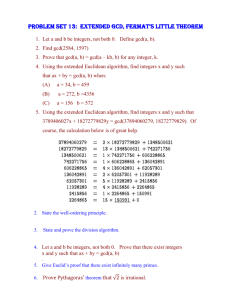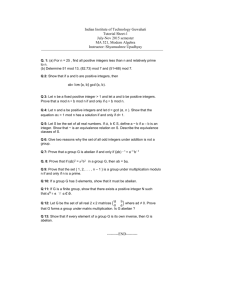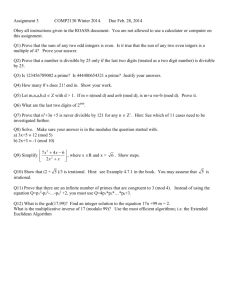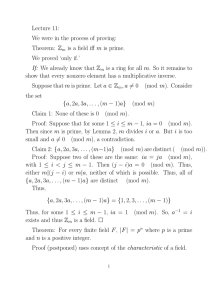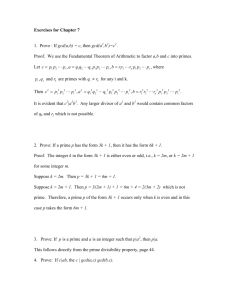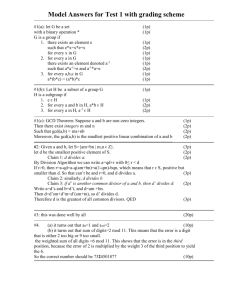ps14
advertisement
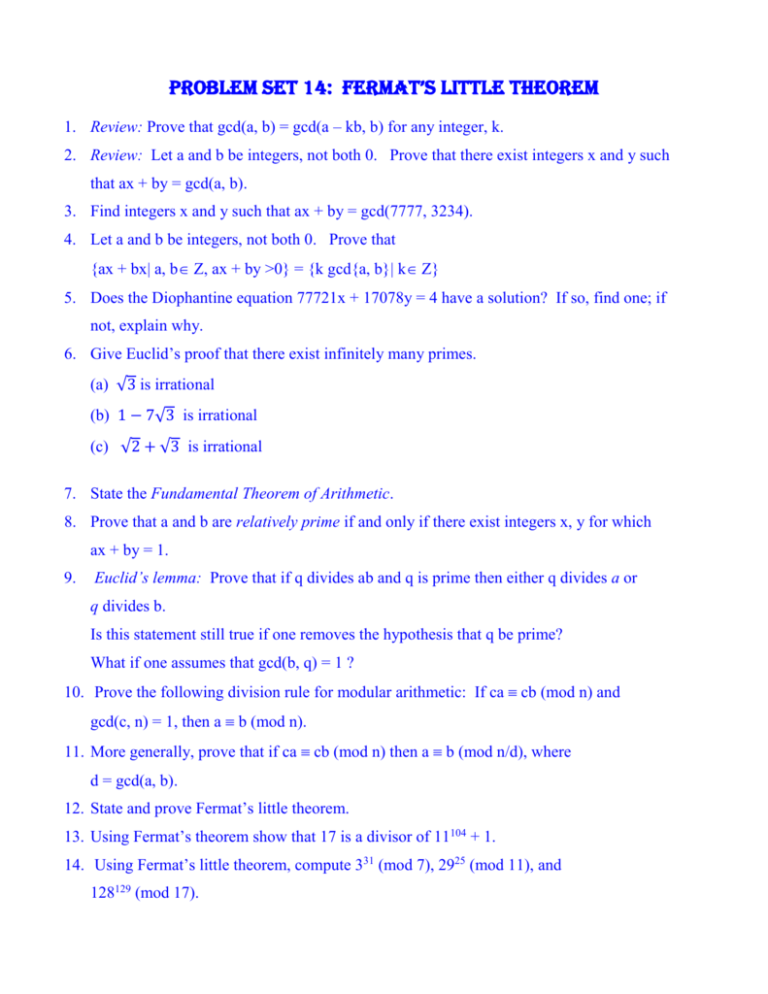
Problem set 14: fermat’s little theorem
1. Review: Prove that gcd(a, b) = gcd(a – kb, b) for any integer, k.
2. Review: Let a and b be integers, not both 0. Prove that there exist integers x and y such
that ax + by = gcd(a, b).
3. Find integers x and y such that ax + by = gcd(7777, 3234).
4. Let a and b be integers, not both 0. Prove that
{ax + bx| a, b Z, ax + by >0} = {k gcd{a, b}| k Z}
5. Does the Diophantine equation 77721x + 17078y = 4 have a solution? If so, find one; if
not, explain why.
6. Give Euclid’s proof that there exist infinitely many primes.
(a) √3 is irrational
(b) 1 − 7√3 is irrational
(c) √2 + √3 is irrational
7. State the Fundamental Theorem of Arithmetic.
8. Prove that a and b are relatively prime if and only if there exist integers x, y for which
ax + by = 1.
9.
Euclid’s lemma: Prove that if q divides ab and q is prime then either q divides a or
q divides b.
Is this statement still true if one removes the hypothesis that q be prime?
What if one assumes that gcd(b, q) = 1 ?
10. Prove the following division rule for modular arithmetic: If ca cb (mod n) and
gcd(c, n) = 1, then a b (mod n).
11. More generally, prove that if ca cb (mod n) then a b (mod n/d), where
d = gcd(a, b).
12. State and prove Fermat’s little theorem.
13. Using Fermat’s theorem show that 17 is a divisor of 11104 + 1.
14. Using Fermat’s little theorem, compute 331 (mod 7), 2925 (mod 11), and
128129 (mod 17).
15. Let k = 20082 + 22008. What is the units digit of k2 + 2k ? (hint: think mod 10)
(a) 0
(b) 2
(c) 4
16. Find 220 + 330 + 440 + 550 + 660 (mod 7)
Supplement:
(from Art of Problem Solving)
We are particularly interested in Proof 2 (Inverses).
(d) 6
(e) 8
